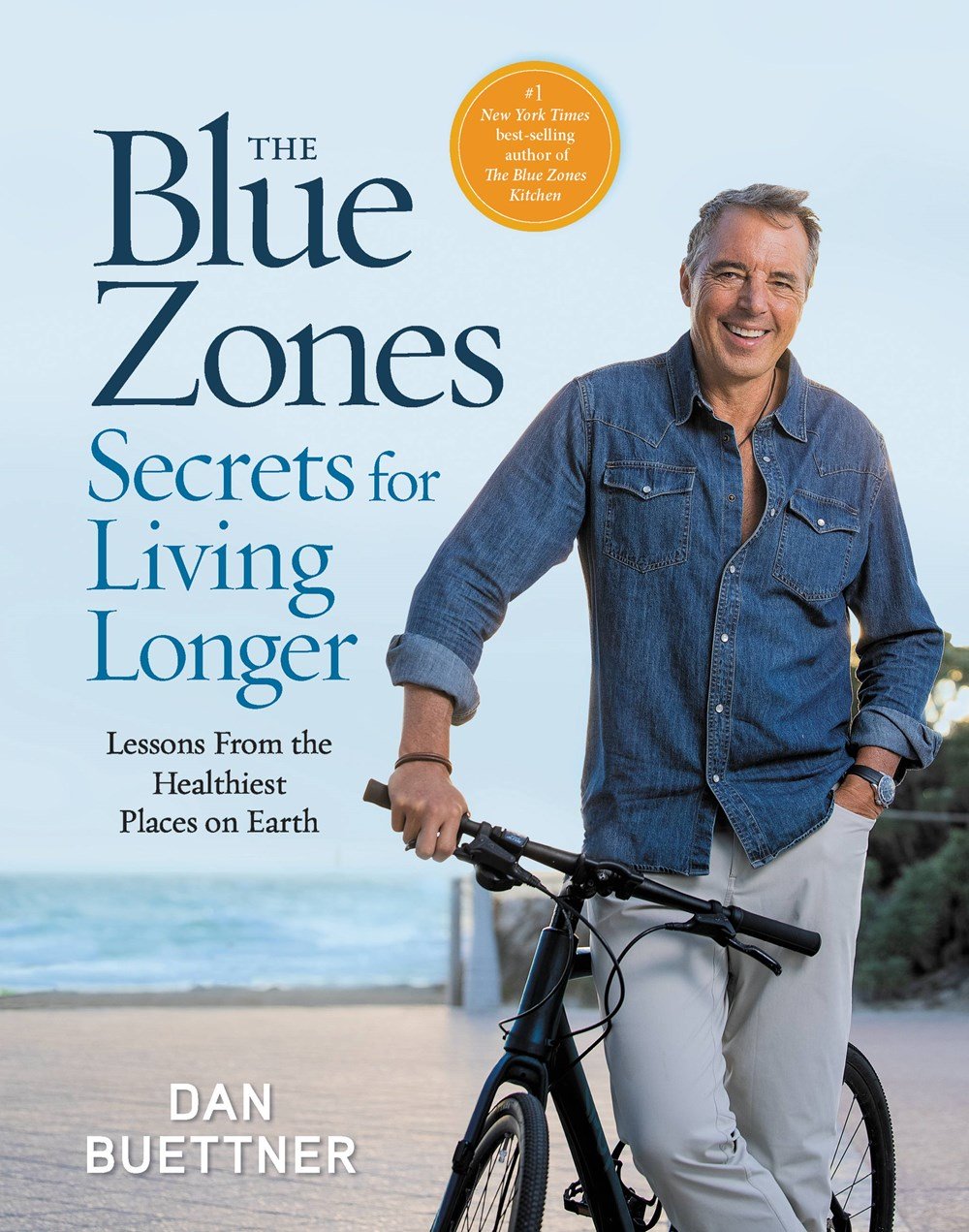I wanted to talk to you about the Standard American Diet today—but first, I have to clarify what the Standard American Diet is and isn’t. (Forgive me if you already know.)
In America, we often use the word diet to mean a specific eating regimen which is almost always (A) different from what we’d normally eat and (B) designed to accomplish some goal, like losing weight or building muscle mass.
But to doctors and researchers, the word ‘diet’ means something simpler: your diet is just “everything you eat.” Where most people use phrases like “I’m going on a diet,” scientists would instead say that they’re changing their diet.
With that in mind, it’s easier to see that the Standard American Diet isn’t what a lot of people hoped it might be. Alas, it is NOT some kind of weight-loss program designed for Americans by a consensus of American experts (or anything like that).
The Standard American Diet is, simply and starkly, what the average American eats—and as we’ve known for a while, that’s not the world’s healthiest diet or anything close. To name just two contrasts between the blue zones’ diets and the Standard American Diet:
- The average American consumes 130 pounds of sugar every year—the most of any country in the world, according to the CDC. While people living in the blue zones do eat a “high-carb” diet, those are mostly complex carbohydrates like whole grains, and so blue zoners consume less than a third of the refined sugar that Americans do (just seven teaspoons a day, or about 45 pounds per year).
- We ate roughly the same amount of meat in 1900 (148 pounds per person per year) as we do now (144 pounds per person per year). Overall, though, the American diet was a lot healthier back then—and one big reason was that processed meats (as we now know them) barely existed then.
Perhaps it’s appropriate that ‘Standard American Diet’ shortens to SAD. It’s cutting a lot of lives short.
So today, I want to take a closer look at the SAD and share some little ways to turn frowns upside down. Along the way, I’ll show you how small changes really can make a big difference to your longevity—how you could literally add years to your life just by checking a few small dietary boxes.
Who needs the fountain of youth when you have beans and peanut butter?

As I’ve learned studying the blue zones, there are many factors at play with longevity, or how long you live. Some of it is fate (like not being struck by lightning), some of it is genetic luck, some of it is your physical environment, some of it is your social environment—and so on, with as many factors as you’d care to name. A lot of things can matter.
Having said that, diet is arguably the single most important factor in determining how long a person can live. It makes natural sense that eating better will sustain a person’s body for longer, but more importantly, this is the consistent finding of science and medicine.
Norwegian researchers recently developed a model for predicting the effect of dietary choices on life expectancy. In other words: they built a program which processes a ton of peer-reviewed scientific data to estimate how much longer a person could live (ceteris paribus) if they changed their diet in certain specific ways.
The researchers found that typical Americans would see the largest gains in life expectancy by eating more legumes, whole grains, and nuts, as well as reducing the intake of red and processed meat.
Again, it’s a statistical model and not a crystal ball, but… care to guess how much longer the average American could live if they made changes like those?
TWELVE YEARS. To be specific, it’s 10.7 years for American women and 13 years for American men—but either way, you’re talking about adding more than a decade of lifespan.
To put this figure into perspective: adding 12 years to someone’s life expectancy gives them more than four thousand extra days, which they wouldn’t have had otherwise, to pursue their passions and share time with loved ones. All they’d have to do in exchange is eat more beans and whole grains and nuts, and cut down on hot dogs and cheeseburgers and junk like that.
Below, I’ve copied a graph showing the estimated gains in life expectancy for each individual element of an optimized* diet. Notice that certain dietary changes can add years to your life individually, even if you make the changes later in life:

Bear in mind, too, that it’s usually quite possible to do better than “average” because average is, by definition, the middle of the pack. So, with commitment and a little luck, some Americans would gain more than thirteen extra years just by changing their diets in those small ways!
*I think we can all agree that the phrase “optimized diet” sounds more technical than it does tasty—so you’ll have to forgive the scientists for their cold, analytical choice of words. It’s my job, not theirs, to show you that the kind of food they’re talking about can also be delicious, even to a SAD American palate.
In fact, that’s basically the whole revelation of my cookbook The Blue Zones American Kitchen: that America actually does have traditions of healthy, flavorful eating beneath all the bad dietary habits we developed in the course of the twentieth century. You can order it here.

Let’s take a minute to celebrate peanut butter — if you’re looking for the perfect blue zones lunch, this is where it’s at.

You can just do bread and peanut butter (which I like), or you can add some thinly-sliced banana, or you could add a natural, no-sugar-added jam (in place of typical highly-processed grape jelly). You can make it with one slice of bread or two; you can toast the bread or not toast the bread.
Either way, here are the requirements for—and benefits of—making a peanut-butter sandwich according to the blue zones’ dietary principles:
REQUIREMENT: Peanut butter made without sugar, palm oil, or other additives. Old-school peanut butter is basically just peanuts and salt, and it’s bound to be chunkier than what you’d expect from JIF (palm oil makes the texture super-smooth and easier to spread).
BENEFIT (other than taste): You’re eating your handful of nuts per day, which adds about two years to the typical American’s life expectancy.
REQUIREMENT: Bread made with 100% whole grains. The Wonderbreads of the world are super-processed and loaded up with sugars and additives, and when they hit your bloodstream, your insulin levels spike like crazy because your body basically thinks it’s eating cake. Whole-grain bread does what bread was always supposed to do: deliver a nice, clean-burning stream of energy throughout the day.
BENEFIT (other than taste): As I already mentioned, the complex carbohydrates in whole-grain bread deliver energy more evenly over time. But as a bonus, the combination of peanut butter and whole-grain bread actually contains all the amino acids necessary for human sustenance; it’s very much a “complete” meal, even if we think of it as a child’s snack.

Sweet & Salty Peanut Butter Date Bites

Ingredients
8 dates
3 Tbsp peanut butter
Pinch pink salt
The Method
Remove pits from the dates.
Spread peanut butter inside each date.
Sprinkle with a touch of salt (optional).

People living in Blue Zones aren’t actively trying to cultivate habits for long life. Their environments are set up in ways that naturally support healthy behaviors. In this section of Eating to 100, I will share one simple habit you can incorporate into your life. Do it long enough, it becomes part of how you live. Build up enough of these habits, you’ll likely add years to your life and life to your years.
There’s one longevity-boosting detail to the American Dream that we’ve long included inside the house with the white picket fence:
The dinner table.
It’s easy to take the dinner table for granted nowadays… but hundreds of years ago, when the American Dream was but a babe, the Dinner Table represented several kinds of aspiration which went well beyond “feeding your family.” Having a dinner table also meant having a cabin or house big enough for the space; it meant being able to afford obvious “accessories” like chairs and plates and flatware; it meant having enough leisure and downtime to gather the whole family for a meal; it meant giving your children upward mobility by educating them in the table manners of genteel society (I’m told Thomas Jefferson’s mother made sure of that at Shadwell).
As the dinner table became more of an American staple, it also started to mean that you had a regular opportunity to check in on your other blessings—for example, for the kids to share what they learned in school that day. By the time I was a kid, if not well before then, the dinner table had even become an official reminder of privilege and prosperity; just think of how many times we heard growing up that other kids weren’t so lucky to have that food on their plates. (We rolled our eyes, but it was true then and it’s true now.)
But—getting back to the science here—the funny thing about science is that it sometimes offers answers to good questions, whether or not anyone specifically asked. The good question in this case: why is it actually a good thing for people to eat together around the dinner table?
In short: because the social aspects of eating together tend to push our diets in healthier directions. When you eat with other people, you’re likelier to eat at regular times; you’re likelier to pace yourself, which helps to prevent overeating; and you’re likelier to eat from all the food groups on your plate, including your leafy greens and vegetables. The dinner table is especially important for teaching kids healthy eating habits, which will follow them throughout their lives; it’s been shown that kids who eat meals with their families at least three times weekly are likelier to stay in a normal weight range and maintain healthy eating habits into adulthood.
The irony I see: we included the dinner table in the American Dream as a symbol of family wealth, but only once we consistently used them did we discover that they cultivate two kinds of wealth no money can buy: togetherness and health. Scientifically speaking, the dinner table really might be the best place to add time to your life; it’s where the hours spent nurturing your own children can mature into extra years for watching your grandchildren grow up.
The dinner table, and a habit of eating around it, can add years to your life because it creates an environment where eating in healthier ways (again, diet is the biggest factor in longevity) is not merely possible, but enjoyable and fulfilling and thoughtlessly routine. The dinner table is an environment we maintain that helps to maintain us.
So as tempting as the latest binge-watch might be for Dinner Theater, we should all reclaim the dinner table more often nowadays. Not as an austere matter of pride and propriety, but as an opportunity to focus on health as we actually care about it: face to face with our loved ones, wanting the good things to last.

The Blue Zones American Kitchen is available now! If you haven’t ordered your copy yet, you can do so from any retailer where books are sold. Each week, we’re celebrating some of the incredible chefs who have shared their brilliance with us in this lost American Diet of Longevity.

Puerto Rican chef and owner of HipCityVeg, Bar Bombón, and Charlie Was A Sinner, Nicole Marquis is a part of the wave of health-conscious professionals leading a restaurant renaissance. Her award-winning restaurant Bar Bombón offers bold flavors with a 100% plant-based menu full of delightful Latin-inspired foods.
She is passionate about making delicious food that is both good for people’s health and good for the planet.
She shared her recipes for Buffalo Cauliflower Tacos, Guacamole Fresca, Green Goddess Sauce, Cuban Black Beans, and Coconut Rice with us in The Blue Zones American Kitchen.





